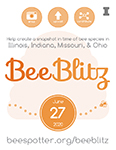You are here
Projects Updates for place: Burrill Hall
- Associated Project(s):
archived info - previous project description
Associated Project(s):Take action, register today, and submit your efforts by July 1, 2021
Associated Project(s):Bee Campus USA Sign Location
Associated Project(s):Attached Files:Free Native Bee Homes from The Bee Conservancy
Associated Project(s):large sign frame arrived
Associated Project(s):Pollinator Pocket Map for Campus
Associated Project(s):Attached Files:Scope Change for Pollinator Awareness Sign
Associated Project(s):Attached Files:Article: Rapid Decline of News Coverage for Pollinators
Associated Project(s):Fall 2020: iSEE Quarterly Update (iQ)
Associated Project(s):Attached Files:Campus Sustainability Celebration
Awards video! and news release!
Associated Project(s):Bee Campus USA 2020 plan
The Day After Tomorrow: Following Advancements of the New U of I Solar
July 27 update
Associated Project(s):Curtis Road landscaping
Associated Project(s):2020 BeeBlitz
Associated Project(s):Bee Campus USA in F&S quarterly report
Associated Project(s):SOLAR FARM LANDSCAPE BUFFER
Associated Project(s):Check out the I-Pollinate citizen science research initiative
Associated Project(s):

 This opportunity is available online.
This opportunity is available online. 
